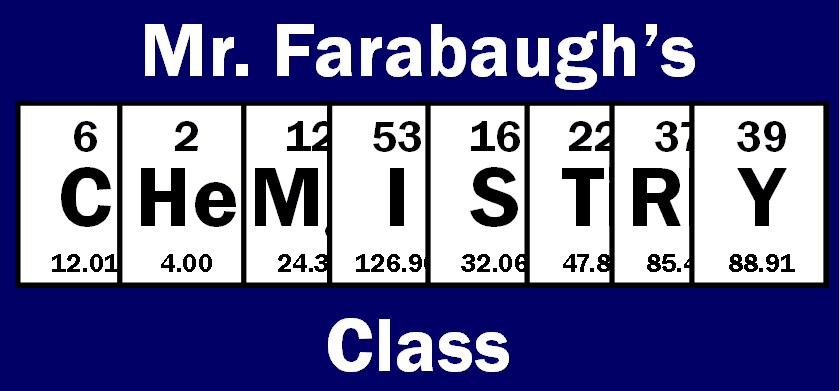Well, I hope you are enjoying your Saturday. Don't forget to celebrate Mole Day! Since it has been several days since my last post, I'll give you a brief summary of our chemistry activities.
AP Chemistry
On Wednesday we finished up our work on Chapter 5 (Gases), including a couple demonstrations of how to calculate the molar mass of a substance. In one demonstration, a volatile liquid (methanol) was heated in a flask placed in a boiling water bath. In another demonstration, butane was released from a disposable lighter underwater. On Friday I gave out the Chapter 5 Test. Students began the test in class and they were instructed to take it home to finish it on their honor.
Advanced Chemistry
On Wednesday we did a lot of practice with writing formulas for ionic compounds. I encouraged students to learn "The Polyatomic Ion Song" to help them remember the eight polyatomic ions.
OH is hydroxide, ClO3 chlorate,
Their charges are both minus one like NO3 nitrate.
Carbonate is CO3, chromate CrO4,
Their charges are both minus two like sulfate SO4.
NH4, NH4, NH4 plus one,
It's the only cation; it's called ammonium.
Phosphate is PO4, charge is minus three,
Polyatomic ions are so fun for you and me!
Besides knowing how to go from the name to the formula and vice versa, we also talked about how to calculate the molar mass of a compound. The molar mass is the mass of one mole of that substance. We calculate molar mass by adding up the atomic masses of all the elements in the formula. Conversions from grams to moles involve dividing by the molar mass, and conversions from moles to grams involve multiplying by the molar mass.
On Thursday I gave a quiz on ionic compounds. Many students still need to finish this (and some students need to start it!) On Friday we celebrated mole day and discussed the concept of a mole. I talked about the fact that Avogadro's Number (6.02 x 1023) represents the number of particles in one mole. These particles can be called atoms, molecules, or formula units, depending on the type of substance. We use atoms when we are talking about an element (like Na). We use molecules when we have a covalent compound (like H2O). We use formula units when we have an ionic compound (like CaCl2).
Honors Chemistry
On Wednesday I gave a quiz on covalent bonding that included names/formulas, Lewis dot structures, structural formulas, empirical formulas, and molecular formulas. On Thursday I introduced the topic of moles as we prepared for Mole Day. On Friday we had our "Molympics," in which students worked in teams to perform various mole-related challenges. Hopefully students feel more comfortable with moles and mole conversions. We will definitely see more practice with this skill throughout the semester.
On Monday I will begin to review for the Midterm Exam with students in Advanced & Honors Chemistry. Those students will take their midterm exam over two days, beginning on Wednesday October 27th. The end of the 9 weeks grading period is on October 29th.

No comments:
Post a Comment